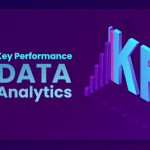As of late, more companies are migrating their database onto the cloud for many good reasons. Cloud offers plenty of benefits in cost, security, scalability, accountability, etc., to better meet business goals. However, migrating databases onto the cloud may not be that simple. There are many things to consider when you are planning to migrate to a database. This article will discuss some essentials to know about smooth cloud database administration migration and the do’s and don’ts to follow.
DO’s of Cloud Migration
Know your current environment
To plan for cloud migration, first ensures that you have a fair understanding of your database applications and resources. There are various methods for you to understand your environment before planning to shift. For this, you may use some assessment tools like Azure Migrate, which will help discover your server workloads and related dependencies. Data Migration Assistant may be used to run the assessment for MS SQL databases compatibility with the cloud. The App Service Migration Assistant by Azure can help evaluate the web applications feasibility to migrate to PaaS App Services and so on.
The on-premises evaluation will provide a fair idea about the feature compatibilities and on-premises assessment of cloud migration. With these evaluations, you may know the readiness for the lift and shift for migration. All these need to be prepped by deploying some virtual appliances like OVA and VHD and on-premises to provide the rights. By working with any partner like SaaSplaza, you can easily prep the assessment environment and further migration.
Set your goals clearly to define your path to follow
First, define what you have to achieve with cloud migration. Consider your goals as to whether you want to improve the performance or save costs with cloud migration. Understanding your objectives is very crucial to design the target database environment and functions.
To execute it well, you may take a phased approach to migration, which will let you effectively design, execute, operate, and optimize the database on the cloud. For example, ‘Lift and shift’ is considered one of the first steps in cloud migration. When your workloads are migrated effectively to the cloud, further optimizations and enhancements are easier to implement and test. If you plan to migrate the core workloads initially and then add-on features, that is also an ideal approach based on your use case.
Evaluate your applications for cloud readiness
You need to assess whether your applications can be rearchitected or refactored into smaller services. To use the cloud features may not be a large undertaking. For example, you need to check the aspects of your application like
- Whether it can utilize the local drive storage or file share?
- Whether the application can use Azure files or object storage etc.
Downsizing the applications into small pieces will increase the availability and resilience while on cloud-native. Doing so will also help decrease the management overhead while dealing with cloud-based applications. You can start small on being cloud-native, and there is no need for any major shift for the same. For cloud migration projects, you may consult with RemoteDBA.com for expert advice.
Choosing the right SKUs for performance and availability
Each option comes with a unique set of conditions. Even if you may not be interested in going through all the fine prints, ensure that you have chosen apt SKUs for the applications by working with the experts. For your enterprise applications, based on the requirement, you may choose between the basic, standard, advanced, or premium SKUs, each of which may vary in terms of features, performance, cost, and availability, etc.
While selecting the Azure File Storage, the Standard and Performance tiers vary in the level of performance as the cost element changes. Usually, a standard SKU may charge based on the storage you use and the storage for transactions, whereas a premium SKU may charge a higher provisioned amount with an add-on feature on offer.
To choose the cloud virtual machine SKU, you need to compute resources, consider the workload type and the availability requirements. Azure Virtual Machine SLA depends on the SKU of the assigned disk as Standard SSD, Standard HDD, Premium SSD, etc. The prices may vary based on the SKUs, so you need to ensure that you always choose the correct SKU for the applications. However, one more thing to consider is the availability of SKUs. All SKUs are not available in all regions. You may go through the product availability roadmap too as part of the cloud design to ensure that the SKU you choose is available at your migration timeline.
Devising a solid migration plan
While migrating, always ensure that you test the backout procedures too. Ensure that everything gets documented and there are application teams and end-users ready for testing the same. It is important to have a rock-solid backout plan in case of any adversities. If you face any obstacles during the migration, there should be set parameters and a deadline for the backout procedure. Most importantly, you should constantly be testing during the migration process.
Plan the timeline for migration and automate the deployment
Considering how much data to migrate and the bandwidth to run Azure is important to know the timeframe of migration. You may also consider seeding the data for quicker migration. Just copy it as a whole and sync the changes so that there is only less to copy during the cutover. You may also need to use the Azure Data Box for any offline seeding. In real-time scenarios, the big data migrations may take weeks over the network if not prepared well.
You may try to utilize automation as far as possible for migration and deployment. Automation will help to quickly rebuild the environments and increase the consistency of deployment. It is also much easier to do ongoing management with automation features. Automation of Azure can be incorporated into the lifecycle management, which will ensure continuous improvement.










